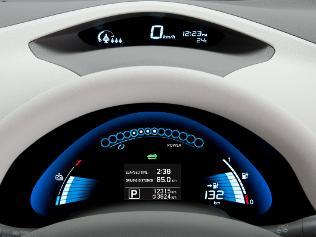Any colour so long as it's green
ONCE upon a time you could tell an employee's seniority by the trim level of the large sedan in their parking spot. Not any more.

ONCE upon a time you could tell an employee's seniority by the trim level of the large sedan - a Commodore or a Falcon - in their parking spot. Not any more.
Vehicle shapes are different and so are the brands. The work car park has changed irrevocably.
The trio of forces responsible - rising fuel prices, cheaper imports and user-chooser leases - has now been joined by a fourth, which threatens to be every bit as profound: concern about emissions. Together governments and enterprises buy half of all new vehicles sold and environmentally friendly cars are vying for their business. But will fleets go green?
The motive is there, according to Henry O'Clery, the executive director of Future Climate Australia and founder of Greenfleet: "If you save fuel, you save emissions and you save money."
However, the government is sending mixed messages, he says. "We're looking at spending billions to reduce greenhouse emissions, yet we're also spending billions to keep on producing large cars that go in exactly the opposite direction."
Despite this, fleets have downsized decisively because of rising fuel prices. A decade ago, 27 per cent of new cars bought by fleets were large - those locally built Commodores and Falcons - and fewer than 10 per cent were small. By 2008, small cars made up 20 per cent of fleet purchases while demand for large sedans had been cut almost in half.
Tony Robinson, of fleet consultant Innovation Sureplan, says that high fuel prices promote the green agenda. "A lot of fleets are looking at changing the size of their cars for economic reasons. And in doing so, they then look at the green issues. They can say they have a green policy, but it's driven by economics too."
The cost of ownership is the biggest single concern for fleets and downsizing has been joined by a more recent trend: the rise of alternative fuels. Again, it means that the bottom line and green concerns can run in parallel.
The big winner here has been diesel. Since 2005, fleet demand for diesels has doubled, to almost 150,000 vehicles per year. Passenger cars powered by diesel - as opposed to light commercial vehicles and sports utilities, which traditionally run on the fuel - have had the biggest increase. In the past five years sales have increased tenfold and 8 per cent of new fleet cars now run on the oily fuel.
The managing director of fleet management company Orix Australia, John Carter, says his internal fleet of 500 vehicles now includes diesels such as imported Volkswagen Golf hatchbacks. The initial vehicle cost is higher, he says, but this is paid back over the life of the car, thanks to reduced fuel consumption.
Carter says environmental concerns are back on the boardroom agenda now the GFC has eased. "We have a strategy of reducing our carbon footprint and assisting our customers to do that, too."
Diesel sales may have boomed, but until recently Australian car makers Ford, GM Holden and Toyota have focused on another option: liquefied petroleum gas.
Paul Wheelton runs 1200 vehicles in Queensland and Victoria under the Budget franchise and believes he is the only rental operator in Australia using LPG vehicles. "Everyone else has been dubious, but they've been an incredible success for me," he says. But the dubious have been in the majority. Last year, fleets bought fewer than 10,000 new LPG cars or light commercials, though that figure excludes dual-fuel versions of the Commodore and after-market conversions. Over the period in which diesel demand doubled, LPG sales rose just 25 per cent. However, from the environmental perspective there's another problem, according to O'Clery. "The fuel should be able to offer 20-25 per cent better emissions than petrol, but it doesn't because of the old technology we have been using," he says. A new system, known as liquid injection, will be offered by Ford on its dedicated LPG Falcon sedans and utes this year.
Holden believes LPG has potential but it is also pursuing ethanol-petrol blends, with a Commodore due this year that can run on E85, which comprises up to 85 per cent of the bio-fuel. Holden has joined a consortium studying the potential to make the fuel here.
Toyota offers an LPG van but its focus has been on hybrid technology. Earlier this year it launched the first locally built petrol-electric car, the Camry Hybrid. So far, hybrids have been the least successful alternative and with demand flat, they account for a tiny fraction of fleet purchases.
Wheelton has some hybrids in his rental fleets, but says their better fuel efficiency isn't enough to offset the extra purchase cost and few people are willing to pay more to rent them. Another issue occurs at the end of the vehicle's life, as the resale values are low. Again, cost is crucial and in this respect Robinson believes the Camry Hybrid could be a game-changer for the technology, as it lowers the price of entry. "Toyota has packaged and priced the Camry Hybrid very well. Initially, there was a feeling it would be targeted at government ranks, but now fleets are looking closely at it."
Governments were certainly the first to sign up - Victoria committed to the purchase of 2000 before the price was even announced. The variety of hybrids available will expand over the next few years and costs are likely to drop further, with Honda due to import its hybrid small car, the Insight, later this year.
By comparison, it's still very early days for the electric car, but as with hybrids, it's up to governments to act as testbeds for the technology and as early adopters, according to Sydney's lord mayor, Clover Moore. The city will install its first charging station before the end of the year and has agreed to purchase 50 electric cars for its fleet. Moore says Sydney wants to send an environmental message. "This is not necessarily the most economic solution for us. But it's an important signal to other fleet owners and the community."
Other Australian authorities are now inching in the same direction and electric cars are beginning to arrive. Two of Mitsubishi's iMiEV city runabouts are in Australia for evaluation before sales begin, probably later this year. They will not be cheap - possibly as high as $70,000 - and in the early stages, governments are likely to be the main buyers.
Among car makers, the Renault-Nissan group is most heavily committed to electric vehicles and with the Leaf hatchback, due here in 2012, believes it has the first affordable mainstream product. If the price is right, Wheelton thinks his rental operation could be a perfect fit. "Eighty per cent of our usage is low-kilometre and if you can plug it into a normal power point, it's going to be very easy to equip our yards."
In another few years, the work car park could look very different again.
Philip King is The Australian's motoring editor.


